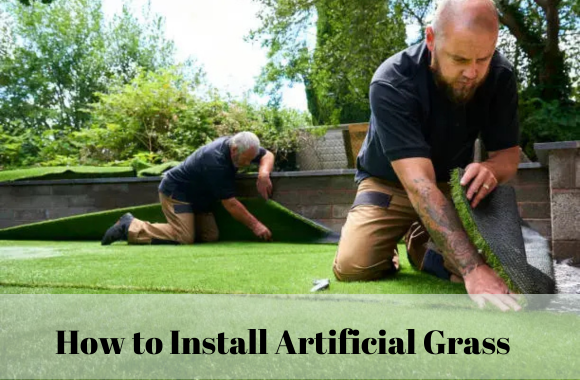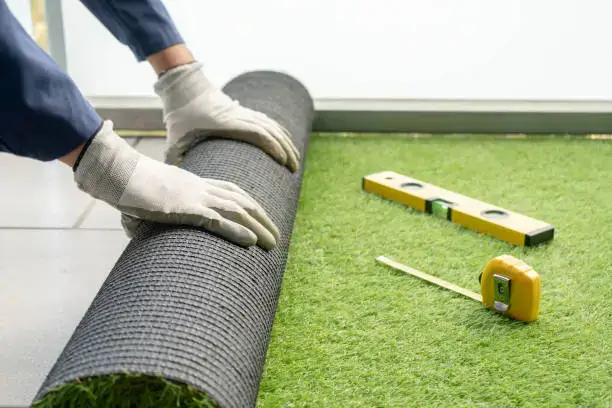Our Location
Islamabad, Pakistan
Artificial grass, also known as synthetic turf, is a modern solution for homeowners seeking a lush, green lawn without the hassle of regular maintenance. Whether you’re tired of mowing, watering, or dealing with patchy grass, installing artificial grass can transform your outdoor space into a pristine, low-maintenance oasis.
But How to install artificial grass correctly? Follow this comprehensive guide to achieve a perfect finish.

Before you begin, gather the following tools and materials:

Not all artificial grass is created equal. Choose based on:
Accurate measurements are essential. Measure the length and width of your yard to calculate the total square footage. Plan the layout to minimize seams and material waste.

Remove existing grass, weeds, and debris. Use a shovel or sod cutter for large areas. If drainage is a concern, address it by ensuring a slight slope away from structures.
A solid base ensures durability and proper drainage. Spread a layer of crushed gravel or sand about 2-4 inches deep. This base prevents shifting and helps water drain effectively.
Use a plate compactor or a hand tamper to compress the base layer firmly. A level surface is critical for a seamless installation.
Unroll the artificial grass and let it sit for a few hours to flatten. Trim it to fit the area using a utility knife, ensuring the edges align perfectly with boundaries.
Fix the grass in place using nails, staples, or adhesive. Place them around the perimeter and every few feet in the middle to prevent movement.
If using multiple rolls, overlap the edges slightly and cut along the seam. Use adhesive or joining tape to secure the seams, pressing firmly to avoid gaps.

Brush the grass with a stiff broom to lift the fibers, giving it a natural appearance.
Spread infill material, such as silica sand or rubber granules, evenly over the surface. This helps the blades stand upright and provides additional weight for stability.
Inspect the lawn for wrinkles or uneven sections. Adjust as necessary to ensure a smooth finish.

Remove leaves and debris with a leaf blower or a broom. Rinse the surface occasionally to keep it fresh.
Avoid dragging heavy furniture or sharp objects across the grass.
Artificial grass is weather-resistant, but you should brush it regularly after heavy snowfall or rain to prevent compaction.
Installing artificial grass is a rewarding DIY project that saves time and effort in the long run. With proper preparation and installation, you can enjoy a flawless, low-maintenance lawn year-round.
Yes, with proper preparation and adhesive, artificial grass can be installed on concrete for a lush surface.
High-quality artificial grass can last 15–20 years with proper care.
Absolutely! It’s non-toxic, soft, and easy to clean, making it ideal for families.
With the right tools and guidance, DIY installation is achievable, though professionals can ensure a flawless finish.
Yes, most artificial grass has built-in drainage systems to handle rain and spills.